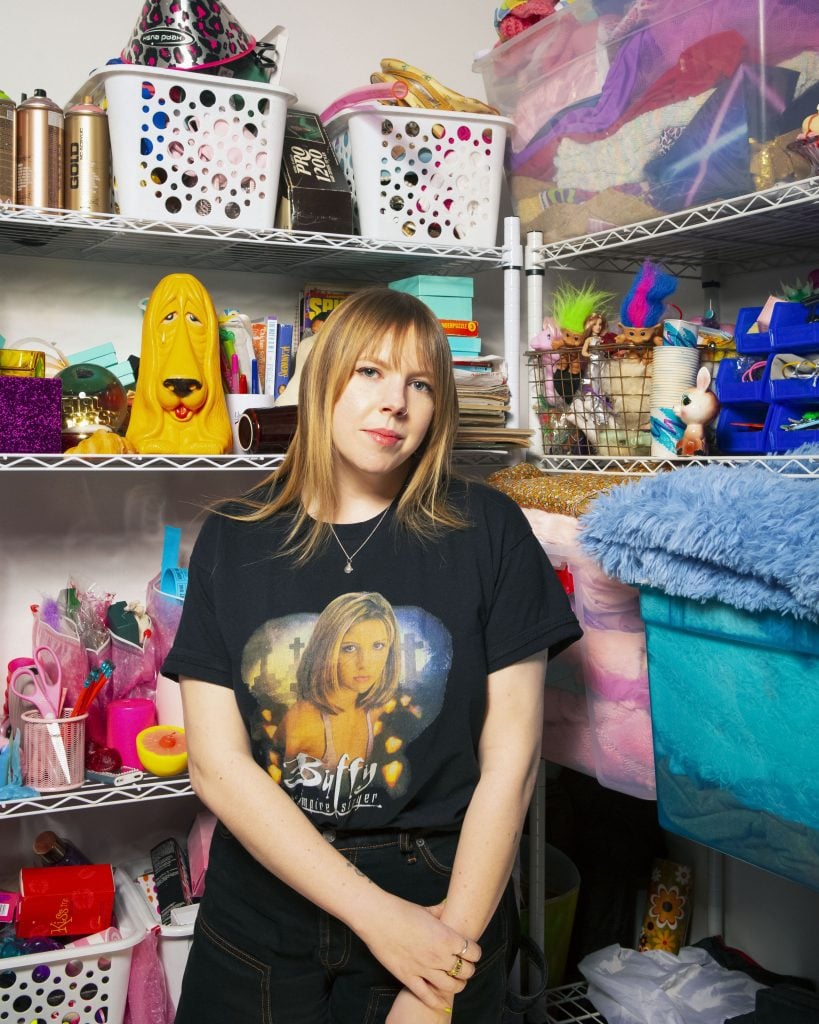As a teen in the early 2000s, Elizabeth Renstrom fancied herself a Nylon girl, but in the grocery store checkout line, a different side of her came out. That’s when more mainstream magazines like Cosmo Girl and J-14 made their way into her cart. “I would sneak them and read them,” she said in a slight whisper, as if copping to a crime.
Even then, Renstrom was aware of the shame attached to this habit—she just didn’t know that the magazines were the cause, not the effect.
Now a successful photographer whose list of commercial clients includes some of the publications she once consumed clandestinely, Renstrom has found herself reflecting on this older chapter of her life and the imagery that wallpapered it. The process inspired her latest exhibition at New York’s Baxter St., for which she enlisted the help of ChatGPT to create her own fictional teen rag: Yummy.
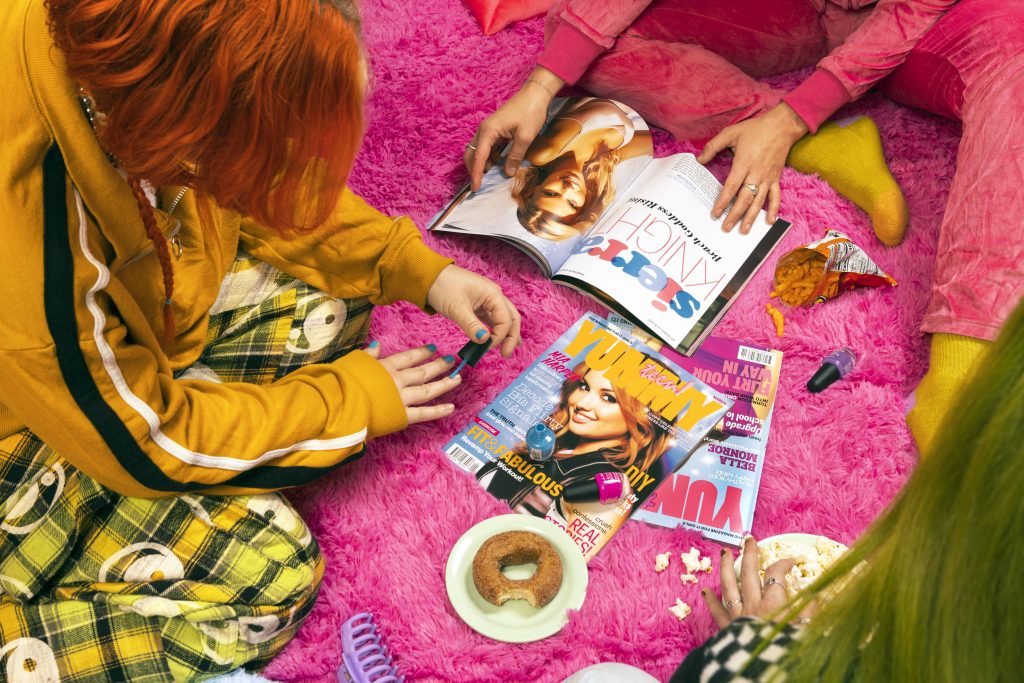
Elizabeth Renstrom, Yummy (Teen Edition) (2023). Courtesy of the artist.
Working with designer Elena Foraker and writer Coralie Kraft, Renstrom fed the AI program several desktop folders’ worth of images they culled from magazines like Seventeen, Teen Vogue, and Tiger Beat. The computer, in turn, churned out pages and pages of diet guides and kissing tips, fitness “challenges” and “STRATEGIES TO CUT ACNE LIKE A BOSS!”
The best sections are the profiles, which feature spiky-haired heartthrobs like Ethan Summers and Logan Rivers, or new “It” girls like Mia Harper—Renstrom’s personal favorite. (“She’s a horse girl.”) The plastic warp of faces and figures is often what gives AI away, but in this case, it works: these magazines, we remember, are always Photoshopped to an uncanny degree.
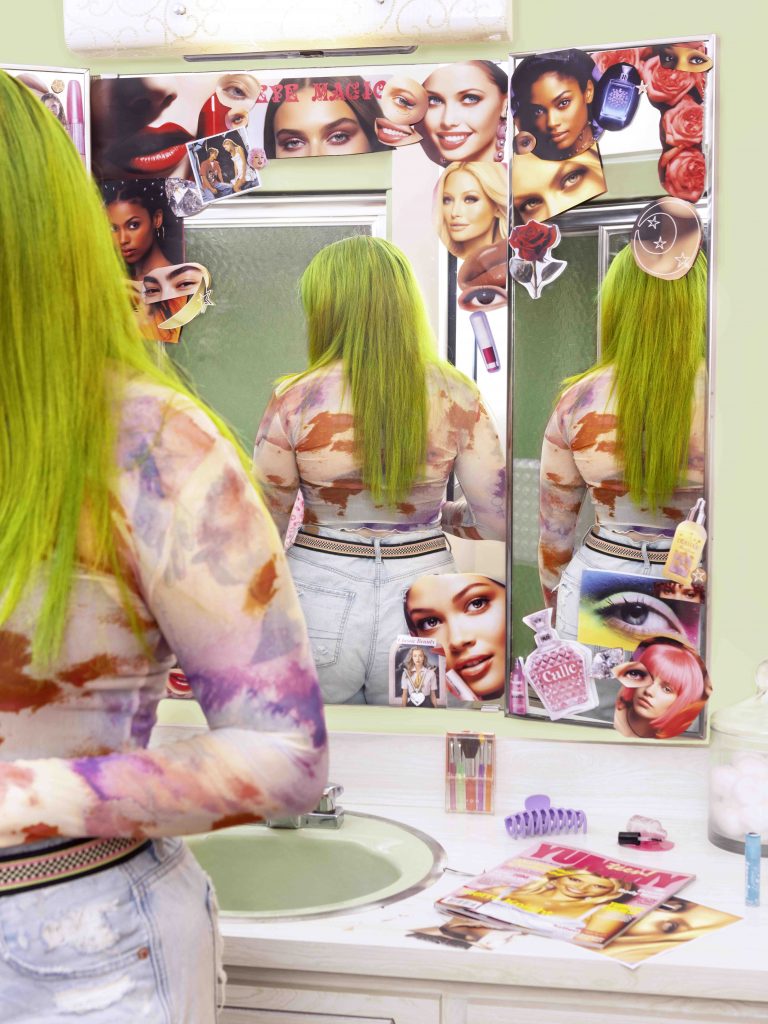
Elizabeth Renstrom, Eye Magic (2023). Courtesy of the artist.
But Renstrom’s reason for using the plug-and-play technology had more to do with another one of its quirks. “For me, what was really interesting about using [AI] was how it kind of functions as a survey of all the imagery it’s been fed,” she said, noting that the biases of the magazines’ source material are very much encoded in the AI’s imitations. The models are all rail-thin and blemish-free. They’re also mostly white and—it seems—aggressively straight.
The bubble-gum aesthetics of the early aughts have surged back into fashion in recent years, in part due to collapsing cycles of fashion, but also because nostalgic millennials like Renstrom have taken over media and its target demographics. Her own commercial and editorial photos are absolutely steeped in allusions to this era, and though most are made with a loving wink, they are still savvy tools of marketing. If Renstrom is using Yummy to mock the magazine machine, then she is also, on some level, taking a shot at herself.
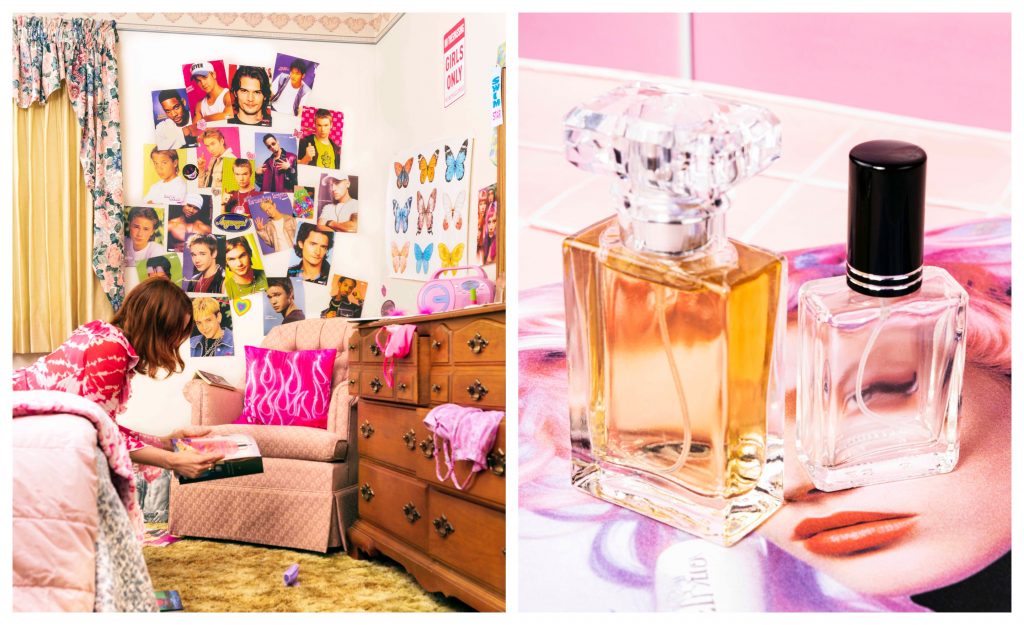
Elizabeth Renstrom, Heartthrob (2023) and Beauty Under $10 (2023). Courtesy of the artist.
The irony is not lost on her. “When we’re feeding prompts to ChatGPT, it’s probably pulling from some of the work that I contributed,” she said in a shrugged tone, the issue unresolved in her mind. “I’m working through it!”
The three issues of Yummy that Renstrom and her collaborators produced sit on a rack at Baxter St., free for visitors to take, but it’s the artist’s other work on view that drives her point home.
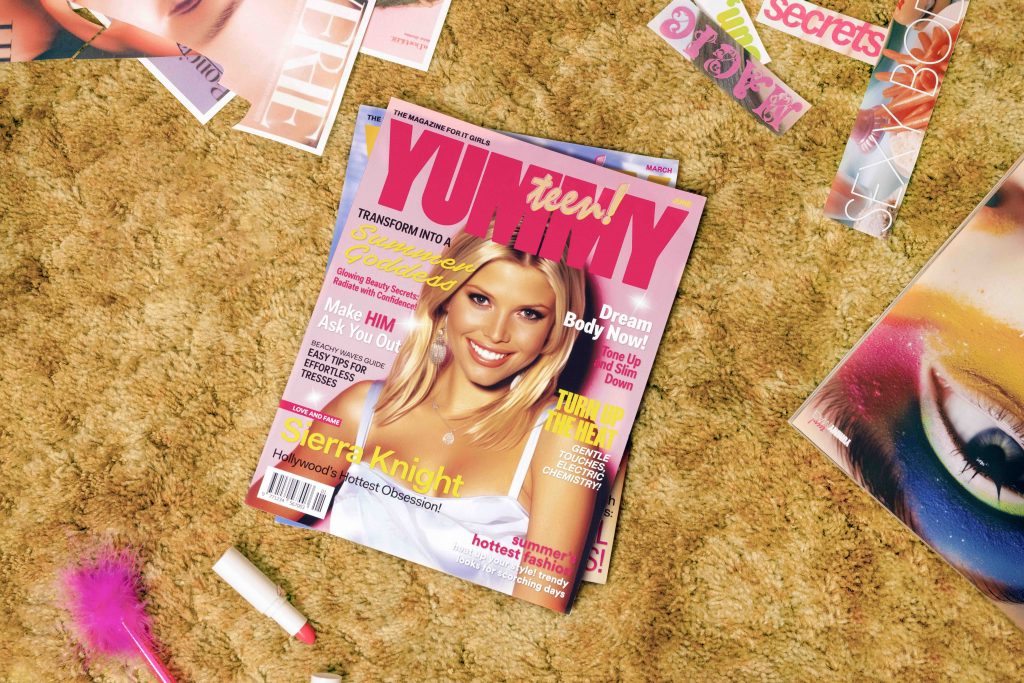
Elizabeth Renstrom, Sierra Knight (2023). Courtesy of the artist.
Further back in the gallery is a series of photographs featuring real teen girls lounging in bedrooms of their own design. The subjects’ faces slip out of frame as Renstrom’s lens lingers on the walls around them, each collaged with pages torn from the fake magazine.
Just as Yummy’s AI-generated content holds up a not-so-funhouse mirror to the magazines on which it’s based, these artificial images reflect a distorted portrait of the young women who have been conditioned to measure their worth against them.
“Elizabeth Renstrom: Yummy” is on view now through February 3, 2024, at Baxter St. in New York.
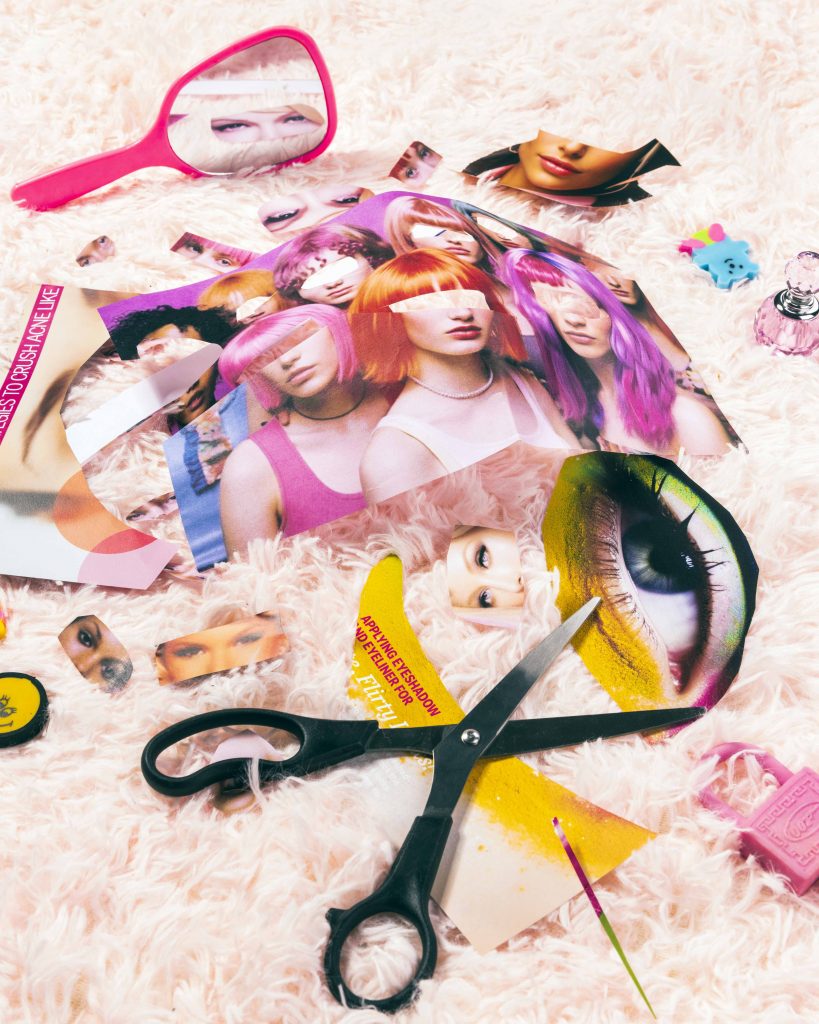
Elizabeth Renstrom, Flirty Fun (2023). Courtesy of the artist.
More Trending Stories:
Artists to Watch This Month: 10 Solo Gallery Exhibitions to See In New York Before the End of the Year
Art Dealers Christina and Emmanuel Di Donna on Their Special Holiday Rituals
Stefanie Heinze Paints Richly Ambiguous Worlds. Collectors Are Obsessed
Inspector Schachter Uncovers Allegations Regarding the Latest Art World Scandal—And It’s a Doozy
Archaeologists Call Foul on the Purported Discovery of a 27,000-Year-Old Pyramid
The Sprawling Legal Dispute Between Yves Bouvier and Dmitry Rybolovlev Is Finally Over
